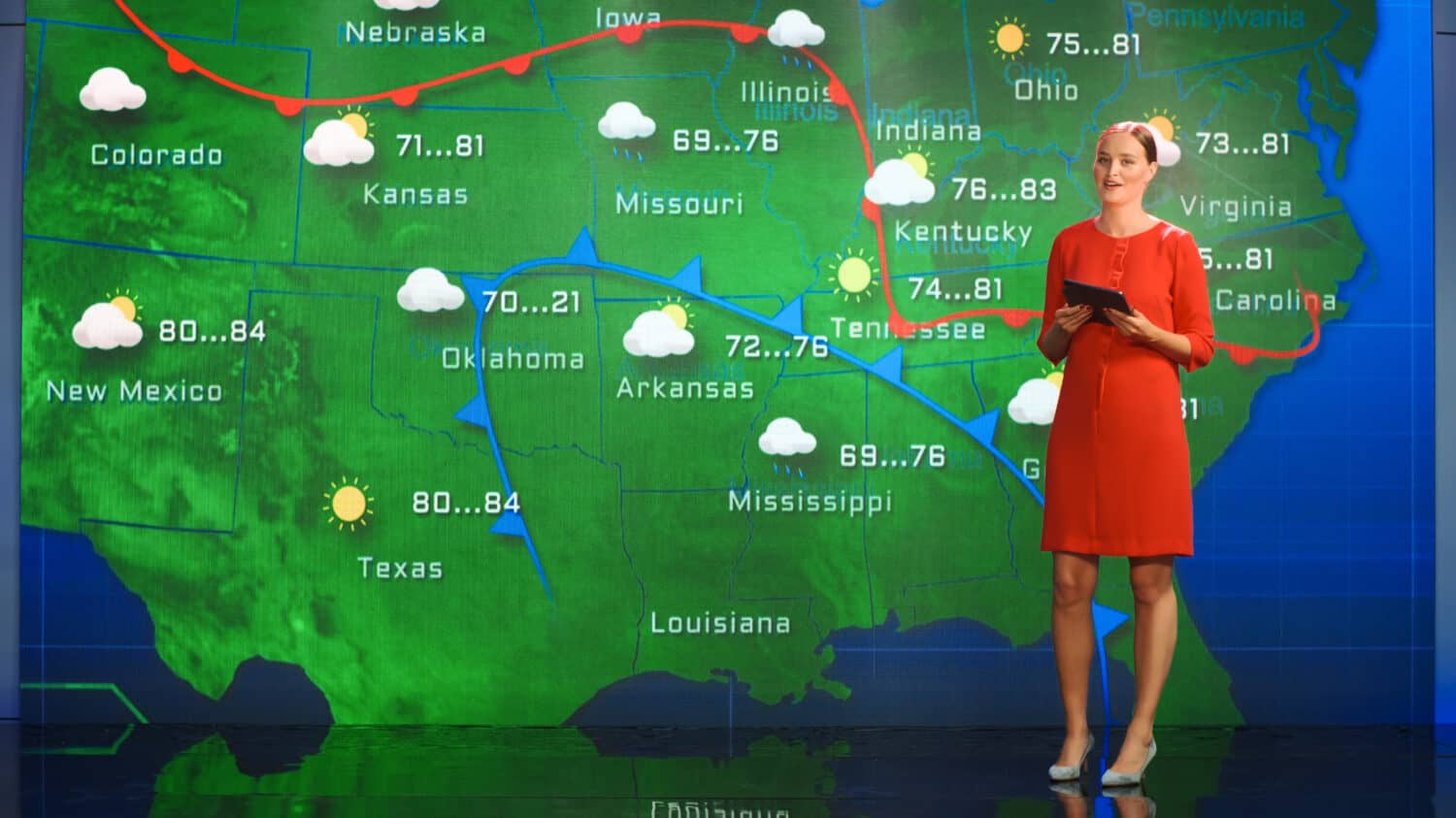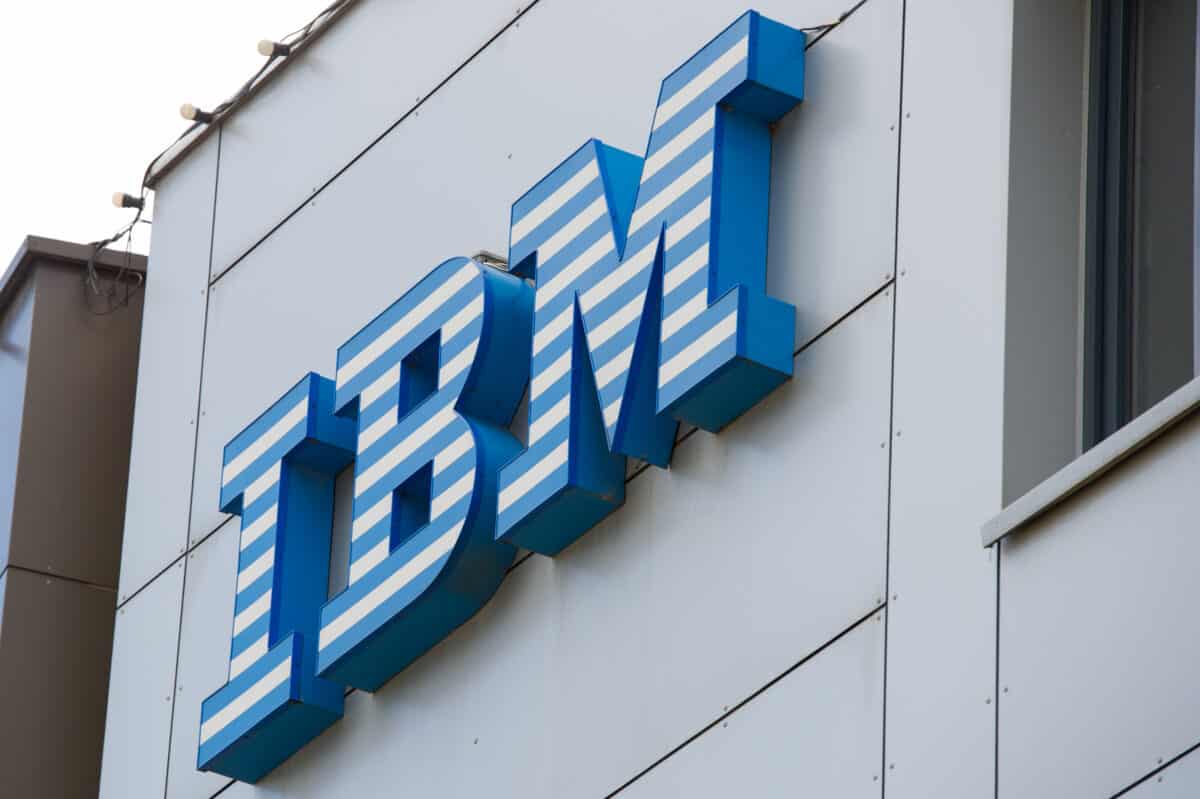The Weather Company is a meteorological technology company that has been revolutionizing the way we consume weather information since its founding in 1982. The company was initially established as a cable television network called The Weather Channel, but over the years, it has expanded its offerings to include a suite of digital products and services that cater to a wide range of consumers. From mobile apps that provide hyper-local weather forecasts to customized solutions for businesses, The Weather Company has become a household name in the weather industry.
The History of The Weather Company: What to Know
Today, we take for granted many of the prolific abilities given to us through our smartphones and computers. In the 1950s, there were ideas and dreams about the possibility of telling the weather across the nation in a localized fashion. At the time, weather forecasts were given to the most heavily populated area where the broadcast originates from. A small black and white camera was mounted next to a series of weather-tracking dials and gauges. That meant all the information broadcasted was localized to the station it was recorded at.
John Coleman, a veteran meteorologist, thought up a piece of equipment that would make it far easier to work with. His design was named the Weather Star. On Sunday, May 2, 1982, The Weather Channel launched with an introduction to the channel from Coleman and Batten.
By 1983, John Coleman was forced out of the company as the channel’s president and CEO. He returned to being a television weather anchor at WCBS-TV in New York City. The Weather Channel continued without him and furthered the Weather Star hardware.
After over a decade of forecasting, The Weather Channel decided to expand into the digital realm. It created an online weather ecosystem with WSI, weather.com, and the Weather Underground. This expansion in 2012 prompted TWC to create a broader holding company named The Weather Company.
The original owner of The Weather Company was made up of capital investors the Blackstone Group, Bain Capital, and NBCUniversal. In 2016, the digital properties under The Weather Company’s name were sold to the massive information technology company, IBM. The Weather Channel remained separate until it was sold to Entertainment Studios in 2018.
Today, the branding of “The Weather Channel” and weather data belong to IBM.

Thanks to The Weather Channel, weather can be broadcast all across the nation, rather than just heavily populated areas.
©Gorodenkoff/Shutterstock.com
The Founding of The Weather Company: How It Happened
In 1980, John Coleman went to Frank Batten with a new idea for weather forecasting. He wanted to bring localized forecasts to cable viewers. His plan to achieve this required a series of equipment that allowed for localized information to be inserted over national forecasts during a live broadcast. The resulting computer system was named Weather Star.
Together, Batten and Coleman formed The Weather Channel, Inc in Atlanta, Georgia on July 18, 1980. The two set about making production deals for the Weather Star system and brokering deals with cable providers. By 1982, Coleman and Batten had realized their dream and launched the channel’s first program at 8:00 PM Eastern Time on May 2, 1982.
The Weather Channel began its localized forecasting with meteorologist anchors Bruce Edwards and Andre Bernier. The original programming solely focused on weather reports and other meteorological information in the United States and a select few other countries using information gathered from the National Oceanic and Atmospheric Administration (NOAA) and various National Weather Service Weather Forecast Offices from around the country.
After only a year of broadcasting, John Coleman was forced out of his position as President and CEO of The Weather Channel.
The Weather Company Through The Decades
1982-1986
While The Weather Channel was formed in 1980, it did not begin actively producing what it’s known for until 1982. This was due to the need for the proper equipment to be installed at the cable provider’s location and specialized service contracts to be made with cable providers.
After Coleman was ousted in 1983, The Weather Channel placed a heavy focus on improving the Weather Star systems. By 1986, Weather Star III was launched with hardware improvements and additional forecast and observational features.
1986-1991
In 1986, The Weather Channel switched its programming format to the traditional anchor format used by news channels. On June 29, 1986, Charlie Welsh reintroduced the newly branded programming by saying, “Good afternoon everyone and welcome to The New Weather Channel. We’re covering weather for everything you do.”
In 1990, the new Weather Star 4000 models were introduced. At first, they offered the same text-based outputs as the previous models. However, by July of that year, the 4000 model featured graphical backgrounds as the first Star that could generate graphics at all.
1991-1996
Powered by new graphical technology, The Weather Channel went through another graphic-heavy revamp. On November 1, 1991, the company filed for a trademark on TWC.
By 1993, TWC was available to 90% of U.S. households with cable service subscriptions. As popularity increased, TWC continued to work toward the visual aesthetic they desired. Small changes were consistently made to include even more access to information such as Short Term Forecasts and National Weather Alerts.
1996-1998
The two years from 1996 to 1998 saw TWC continue to dramatically change its on-air presentation. It was heralded with a new slogan “No Place on Earth Has Better Weather”. The graphics changes included rotating globes and compass points for introductions as well as new music.
1996 was also the year TWC launched the website weather.com. While many of TWC’s aesthetic changes continued to happen, the website found major success. This launch of digital services is what caught the attention of the massive tech monster, IBM.
1998-2001
In 1998, TWC redesigned the graphics of the channel overlay once again. This time, TWC decided to remove the unifying theme in the programming graphical titles such as Weather Center. By 1999, TWC reached over 70 million homes which made up approximately 98% of all households with a cable subscription. TWC also provided radio forecasts to more than 250 radio stations and 52 newspapers.
The largest advancement from 1998-2001 was the Weather Star XL system which allowed for a new audio function known as Vocal Local. This feature assembled narration tracks and read descriptive forecasts and primary weather observations. Fans of The Weather Channel consider the year 2000 to be the split between the “classic” TWC and “modern” TWC.
As part of this noted change, TWC began to move away from 24/7 broadcasts of the Weather Center and introduced two different morning programs; First Outlook and Your Weather Today.
2001-2005
2001 merited another set of changes to TWC’s segment introductions and slogans. The new slogan for the company became “Live By It”. The company decided to remove Weather Center AM and Weather Center PM down to just the Weather Center as the three brand names were found to be unhelpful. Weather Center found itself shortened to allow for other programs like Evening Edition and Weekend Now.
In April 2002, TWC began to rely on in-house compiled local forecasts that had begun in 2001. This marked the beginning of in-house data collection that would later become the foundation of TWC’s digital services.
The popularity of TWC had grown to a level high enough that in 2004 TWC paired up with the United States Postal Service to create stamps depicting clouds. TWC also released a “Cloudscapes” education campaign to help kids in grades 3 through 5 learn about cloud types and weather conditions.
2005-2008
On July 7, 2008, TWC was purchased by NBC Universal, The Blackstone Group, and Bain Capital. This purchase included the primary channel and all of its related assets. The three groups paid $3.5 billion to Landmark Communications for the acquisition.
As a result of NBC Universal’s involvement in the purchase, TWC’s live programming began to feature live video content. This addition provided supplementary coverage during significant weather events.
2008-2013
In 2008, TWC became a part of NBC Universal’s “Green is Universal” campaign. Most of the efforts were around visual changes to the channel programming’s graphics. This change prompted former CEO and President John Coleman to actively oppose the ideas of global warming.
After the start of that campaign, TWC only began to suffer more and more losses until NBC Universal had begun to think about cutting their losses and selling.
2012 saw the creation of The Weather Company. The Weather Company was created to be a larger holding company for all of TWC’s growing lineup of digital products like the weather.com website, WSI, Weather Underground, and The Weather Channel app. This signaled the end of TWC.
The brand is continued by IBM, but only in spirit. IBM has significantly improved upon the data sets and system software they were given at purchase.
2015
In 2015, the remainder of The Weather Channel was sold to Entertainment Studios.

©Hadrian/Shutterstock.com
What are the most important inventions from The Weather Company?
Localized Weather Forecasts
The concept of localized weather forecasts being offered 24/7 was revolutionary. While today we take for granted the ability to easily predict the weather before TWC people relied on almanacs and eyesight.
WeatherStars
The Weather Star system is both a series of weather tracking equipment and graphical interface production. The first three iterations of the Weather Star only produced a text output of observations. With the 4000 series, graphics were introduced that eventually evolved into detailed graphs and map projections.
Here is a list of the models of the Weather Star before they were decommissioned and replaced by IntelliStar:
- Weather Star I
- Weather Star II
- Weather Star III
- Weather Star 4000
- Weather Star Jr
- Weather Star XL
How Did The Weather Company Make Money?
The Weather Company was the larger holding company used to separate TWC’s digital properties from The Weather Channel itself. It primarily made money from investors, advertisements, and data licensing agreements.
The Weather Company Acquisitions
TWC was not known for purchasing other companies to join them. Rather, TWC would create new ventures that would often spin off into successful side ventures. The Weather Company is a product of this habit. However, both The Weather Company and The Weather Channel have now been acquired by others.
The Weather Company Sold to IBM
In 2012, IBM purchased The Weather Company and The Weather Channel brand name for $2 billion. The massive collection of data TWC handled prompted IBM to want to take a closer look. Cloud computing and AI learning systems were seeing heavy development in the early stages. The store of data held by The Weather Company was perfect for IBM to further its software engineering practice and provide an integral service to society.

©JuliusKielaitis/Shutterstock.com
The Weather Channel Sold to Entertainment Studios
While IBM may have purchased the branding of The Weather Channel, The Weather Channel itself was sold to Entertainment Studios. This purchase included the installed Star systems located at the cable providers who signed with TWC.
The Weather Company Notable Controversies
Kicking Out Coleman
Only three short years after the formation of The Weather Channel, Inc, John Coleman was forced out of his position as President and CEO. It is thought that this event was brought forward by John Coleman’s outspoken opinion on global warming. His beliefs were directly contradictory to the popular narrative. For his disagreement, he was found to be a liability to the company. However, there are no available records of public statements made by TWC on this event.
Coleman went back to being a television weatherman.
Green is Universal
During the Green is Universal campaign by NBC Universal, The Weather Channel was forced to institute a series of lay-offs. The company cited the reason for the lay-offs as “cost synergies”. These layoffs resulted in a significant portion of TWC Radio Network, the Road Crew, and the marketing department losing their jobs.